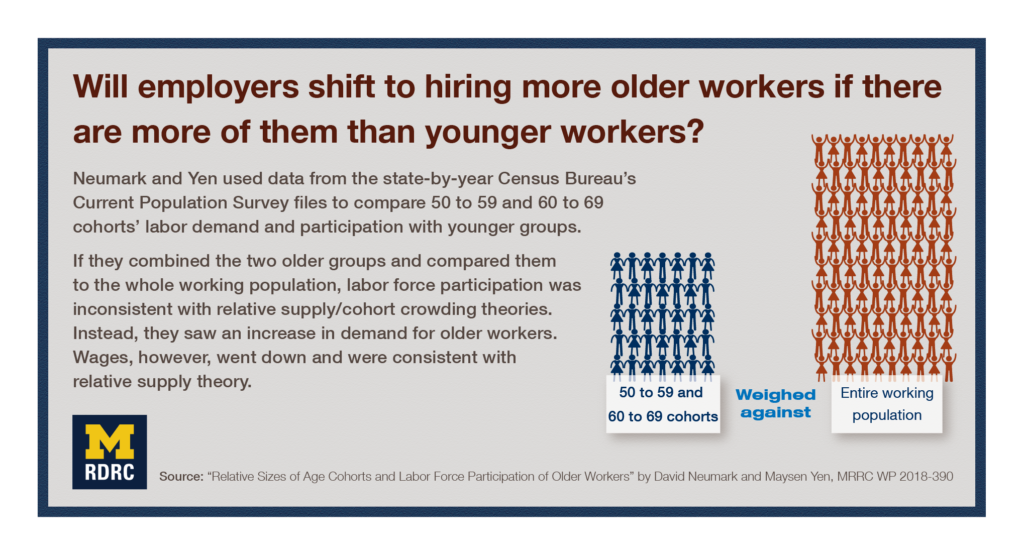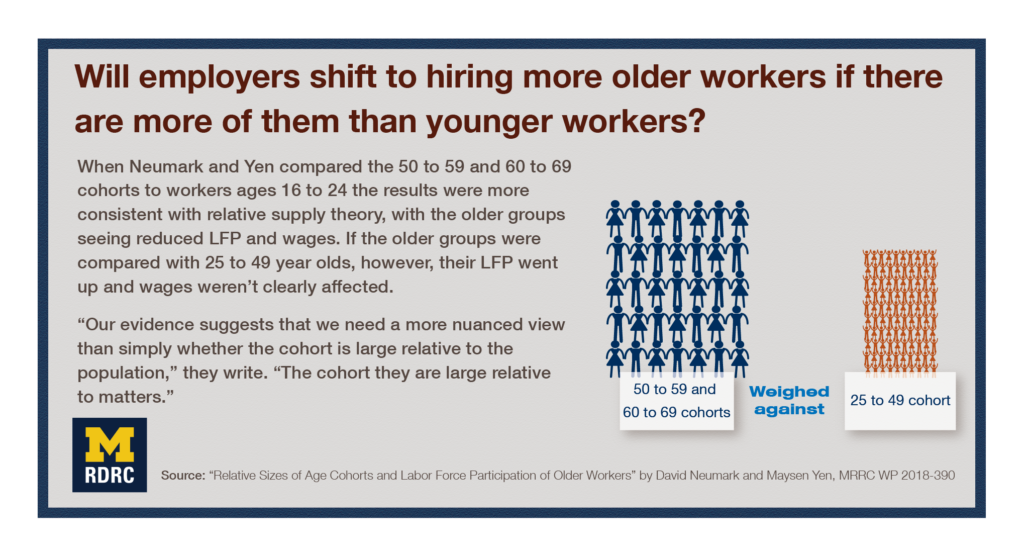
“This [project] is prompted by a question I’ve been asked by many reporters, which is ‘With larger, older cohorts and relatively scarce younger workers, will employers shift to employing more older workers for one reason or another?’” investigator David Neumark said, introducing his then in-progress project at the 2018 Researcher Workshop. “And my answer is always, ‘I don’t know, and that’s a really good question.’ ”
The answer to that question has implications for Social Security because standard cohort crowding or relative supply theories would predict that a relatively large older group would lead to a tighter labor market and lower wages. If older and younger cohorts are substitutable, however, a smaller, younger cohort with fewer workers might increase labor demand for workers from a larger, older cohort. Lower employment rates and wages among the aging Baby Boomer group would mean fewer payroll taxes going to the OASDI trust funds. Worse employment prospects for older workers also might make increasing the retirement age, an often discussed reform, less appealing to policymakers.

In “Relative Sizes of Age Cohorts and Labor Force Participation of Older Workers,” Neumark and co-author Maysen Yen begin to answer the question by examining relative cohort effects. Neumark and Yen used data from the state-by-year Census Bureau’s Current Population Survey files to compare 50 to 59 and 60 to 69 cohorts’ labor demand and participation with younger groups.
The researchers’ findings were complex.
- If they combined the two older groups and compared them to the whole working population, labor force participation was inconsistent with relative supply/cohort crowding theories. Instead, they saw an increase in demand for older workers. Wages, however, went down and were consistent with relative supply theory.
- Comparing the older cohorts to workers ages 16 to 24 brought results more consistent with relative supply theory, with the older groups seeing reduced LFP and wages. If the older groups were compared with 25 to 49 year olds, however, their LFP went up and wages weren’t clearly affected.
“Our evidence suggests that we need a more nuanced view than simply whether the cohort is large relative to the population,” the authors wrote. “The cohort they are large relative to matters.”
For details on the researchers methods and findings, see working paper WP 2018-390.
